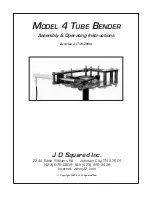
8
(E)
3-2-3. Direction
switching
It is possible to change the phase relationship of A/B phase output
versus the direction of movement of the scale by switching MODE
switch 5.
Note
Th
e phase relationship of the MJ100’s U/V/W phase does not
change even when MODE switch 5 is switched.
3-3. Using the reference point
With the MJ100/110, when the optionally available SET-P16-1
reference point sensor has been connected to the reference point
input connector, the Interpolator can obtain reference point
output signals which are synchronized with the A/B quadrature
signals.
Th
e following reference point output modes can be selected by
setting MODE switch 4. (See Fig. 3-2)
MODE Switch 4
ON
1/4-Z mode
Outputs a synchronized reference
point signal when both A phase
and B phase are high level.
OFF
Z mode
Outputs a synchronized reference
point signal during each cycle of
the A phase.
Th
e reference point signal of SET-P16-1 has a width of
approximately 8 mm. Since reference point output is made in both
directions of scale travel, a diff erence can arise in the reference
point position depending on the direction of travel. Always make
sure that the direction of travel is in the direction for which the
reference point has been established.
Note
• For details on reference point location and operation, refer
to the operating instructions provided with the SET-P16-1
reference point sensor.
• When detecting the reference point, use a reference point
travel speed of 1 mm/s or more.
Summary of Contents for MJ100
Page 3: ...J i...
Page 4: ...ii J...
Page 6: ...2 J 1 2 1 2 3 1 3 0 45 C...
Page 22: ...18 J...
Page 42: ...18 E...
Page 63: ...MJ100 MJ110 1...
















































